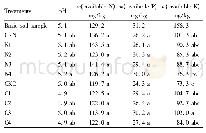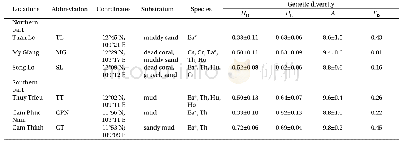《Table 3–Alpha diversity of soils in different treatments.》
 提示:宽带有限、当前游客访问压缩模式
提示:宽带有限、当前游客访问压缩模式
本系列图表出处文件名:随高清版一同展现
《Microbial response to CaCO_3 application in an acid soil in southern China》
Results are expressed as mean value±standard error(n=4).Different letters denote significant differences among treatments(p<0.05).
Soil DOC and DON,as important parts of the nutrition cycling,are vital indices for evaluating soil fertility and characterizing soil productivity,and have essential influence on soil microbial activity and crop growth(Li et al.,2012;Six et al.,2002).Our results showed that the contents of DOC and DON in soil were significantly increased by moderate dose of CaCO3application(Table 1),indicating that proper application of CaCO3could significantly improve soil nutrition cycling.This result was well consistent with that of Kreutzer(1995),who found CaCO3application can modify soil organic matter composition by enhancing DOC contents,C turnover and humus storage,all of which were important processes of soil functions.The increasing of DOC and DON induced by CaCO3application could be attributed to the mitigation of soil acidification and activation of soil microbes.It has been demonstrated that under neutral pH conditions,the solubility of organic matter could be significantly increased,and activity of microbes involved in decomposition of soil organic matter could be enhanced(L?fgren et al.,2009;Paradelo et al.,2015)Rangelcastro et al.(2005)also demonstrated that turnover of C and N could be more rapid in the limed soil due to higher microbial activities.However,under HC treatment,DOC and DON contents decreased compared to control(Table 1)Excessive CaCO3application could lead to the inadaptability of microbes,in addition,some DOC can be easily neutralized with other substances such as calcium and magnesium compounds under high pH conditions,resulting in decline of DOC content.
| 图表编号 | XD0052063100 严禁用于非法目的 |
|---|---|
| 绘制时间 | 2019.05.15 |
| 作者 | Anning Guo、Longjun Ding、Zhong Tang、Zhongqiu Zhao、Guilan Duan |
| 绘制单位 | College of Land Science and Technology, China University of Geosciences (Beijing)、State Key Lab of Urban and Regional Ecology, Research Center for Eco-Environmental Sciences, Chinese Academy of Sciences、State Key Lab of Urban and Regional Ecology, Researc |
| 更多格式 | 高清、无水印(增值服务) |
查看“Table 3–Alpha diversity of soils in different treatments.”的人还看了
-

- Table 2.Alpha diversity indices and numbers of OTUs in rhizosphere and bulk soil microbial communities in different grow





